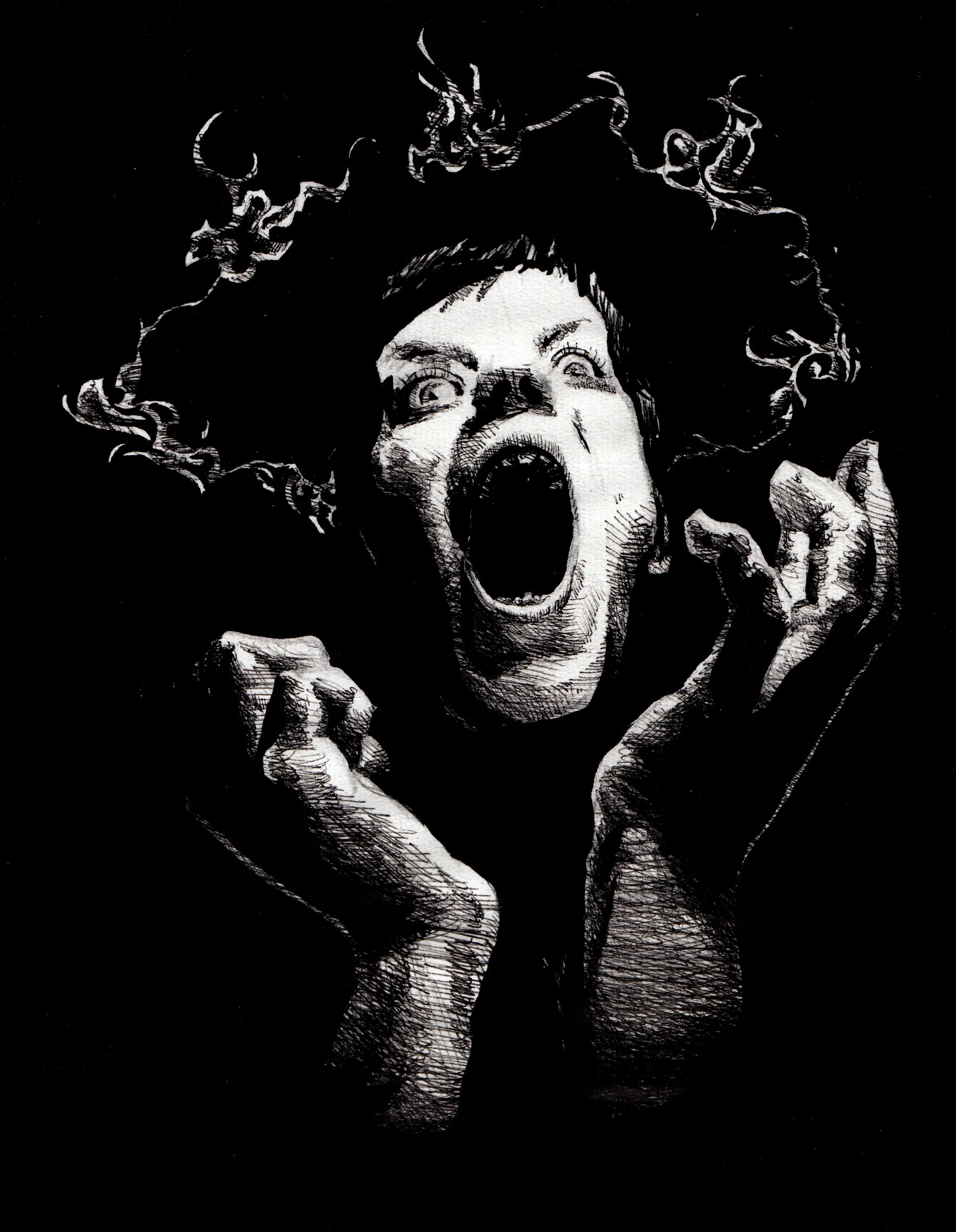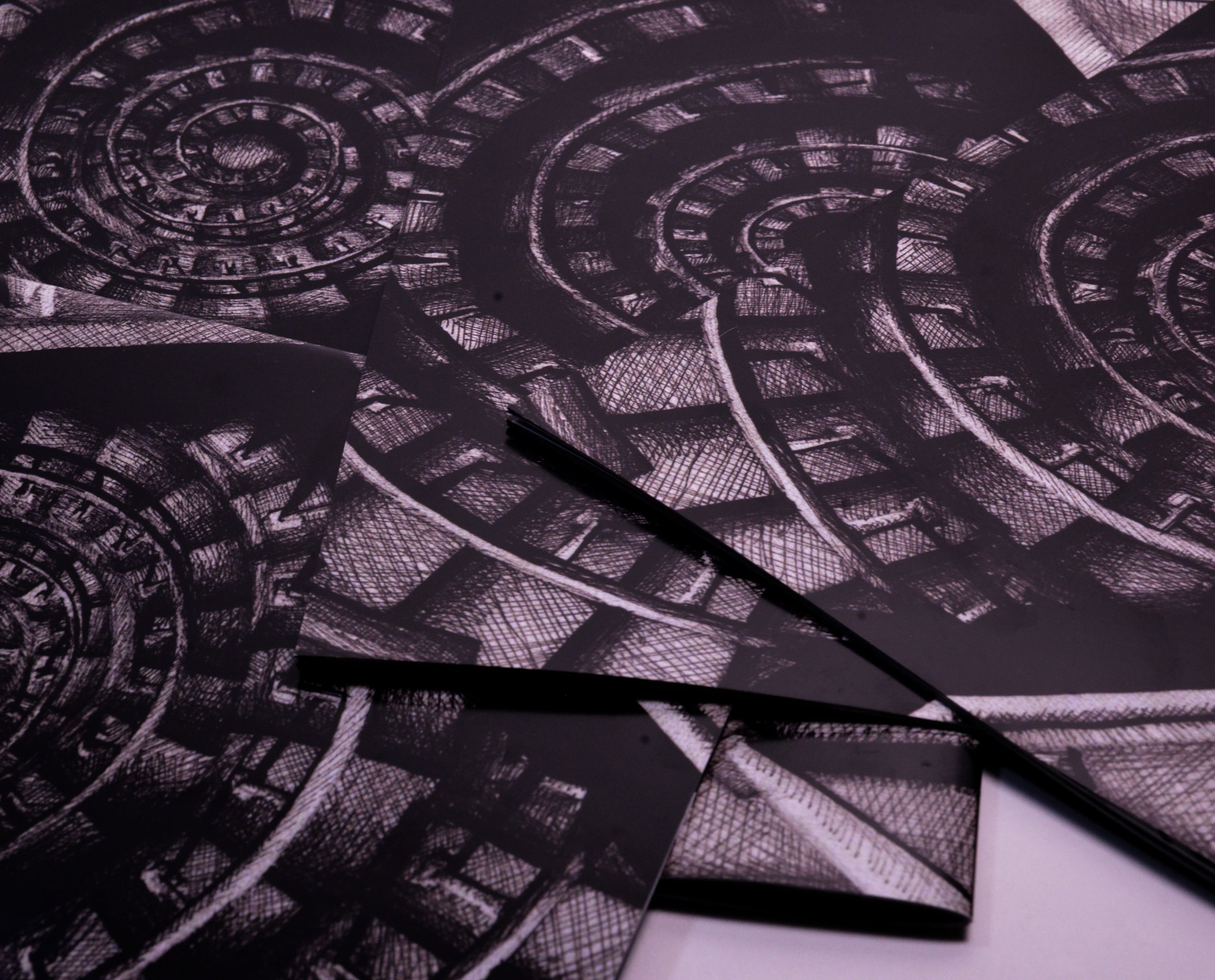Vestiges - Dreams and Nightmares
For the DrivethruRPG game jam this year, Dreams and Nightmares, Geramee Hensley and I joined forces to create a game that related to our own experiences with night terrors, Vestiges. Both Geramee and myself have a history of disturbed sleep caused by painful and distorted memories. These themes often appear in both of our works independently, and so this collaboration helped us both bring strong aspects of our creative research together.
I began researching nostalgia and nightmares beginning in 2020 when the pandemic lockdowns revitalized hyper nostalgic rhetoric. I have been a vivid dreamer for most of my life, and as I aged, nightmares became more and more prevalent. Beginning in 2016, I started to keep a dream journal, and in the winter of 2023 I started to alphabetize them! As I spent more and more time with these nightmares, my relationship with the monsters that terrorized me began to shift. Instead of viewing them as villians, I started to transform them into characters that I could learn to love. Through this shift, I created a 3 volume alphabet book, ‘N is for Nightmare’, that concentrates those ideas. This book was printed on a Vandercook Letterpress machine with 27 uniquely mixed colors.
A Filipinx-American artist, Geramee Hensley is the Social Media Manager for The Kenyon Review and Poetry Editor at Tinderbox Poetry Journal. Their work has been featured in Button Poetry, Permanent Record: Poetics Towards the Archive (Nightboat Books, 2025), Indiana Review, The Journal, The Margins, The Fairy Tale Review, The Recluse, and elsewhere. They’ve won numerous awards including The Minnie Torrance Award in Poetry and The Bill Waller Award in Nonfiction; most recently their mixed media poems have received a 2022 Academy of American Poets Prize and Booth Journal’s 2022 Beyond the Margins prize. Additionally, they were the second-place recipient of Frontier Poetry’s 2023 Hurt and Healing Prize. Their work has been supported by the Tin House Writers Workshop and the Mellon HSI Crossing Latinidades Fellowship.
“I'm a bad sleeper, especially in January and February when dreams become a nightly occurrence. This year I started taking a medication that my psychiatrist pitched to me as ~what they put Vietnam veterans on when they returned from the war.~
Before that medication, nightmares would sweep in like a season. I would wake up gasping—vivid and gruesome images of family members being immolated, or shot in front of me, being eaten alive by loved ones—I could go on.
Some nights, I wouldn't go back to sleep and the deprivation of rest reverberated throughout the week exacerbating other behavioral disorders putting me in my own kind of purgatory where I preferred to hide my face from the world. I felt mad in a Victorian sense. Like I ought to be bloodletted or lobotomized. I am reminded of an Andrew Hudgins' line: "Who knows what we might do: / by night, the craziness of dreams; by day, / the craziness of logic."
I didn't feel more creative in this state, but what was happening was a kind of internal fallow, maybe. Although I am plagued less by nightmares these days, they are still in me—tiny little seeds needing water and light to flower into something more beautiful than they are. “ - Geramee Hensley
MEMORIES, DREAMS, & IDENTITY
The through-line between memories, dreams, and identity are at the core of the concept of our game. It’s unarguable that our memories add definition to our identity, and we are reminded of these fragments of ourselves within our dreams.
Dreams are a hallucinatory experience common to all humans, but how we interpret dreams differs from culture to culture. Dreaming emerges from the personal experiences of an individual yet it also reflects that individual’s cultural environment, languages, customs, concepts, and practices of their community. To understand dreams and how they relate to us, we need to look into different vantage points into studying them. Dream Journals throughout history have provided this linkage. (Wikipedia has a fascinating list of published dream journals). Geramee and I have pulled some of the nightmares in this game directly from our own accounts which adds richness and authenticity to the narrative of the game.
And identity is all of these things and more. Identity is defined broadly as one’s sense of who they are as an individual and within a group. Much of what informs our identity is developed in childhood and then expanded upon as we grow up. (You can read more about the visual culture of fragmentation and identity in my Bachelor’s thesis). How we define ourselves, what values we hold, what aspirations we live up to, and what we admire are core elements of how we see ourselves and oftentimes we have memories to remind us of these components. In Vestiges we opted to give our game a classic exposition: the amnesiac protagonist. This archetype sets up a narrative for that of mystery and discovery, and in our game, collaboration. Recovering lost memories becomes the group’s goal as more and more of the protagonist’s story is unveiled. These memories are core components of this person’s identity, significant life events. They span from meeting their first best friend to struggling to feed a family to losing a son to war. We opted to showcase a varietal scope of memories to allow for diversity in defining what could be ‘significant’ to the protagonist. Although the game can never encompass all dimensions of someone’s lived reality, we gave it our best in providing unique points of view and a variety of experiences.
Both Geramee and myself have a lot to contribute to this theme and decided to create a game that was reliant upon a narrative. With my background making artwork about memories and dreams, and Geramee’s experience as an avid dreamer and writer, this game pulls from the best of us. Vestiges is an rpg narrative game where players must use context clues and make abstract associations to recover the lost memories of the protagonist. This game relies upon players being able to make abstract associations between their own personal word-banks and the context clues given to them during each nightmare. It’s experimental in form, but also relies upon tried and true role-playing mechanics.
MECHANICS & BALANCE
As mentioned before, Vestiges, combines narrative and role-playing to provide opportunities for players to make abstract associations. In this collaborative game, players act as different Aspects of the protagonist’s mind, working together (or sometimes not) to piece back together Figments of a larger memory. This game boasts 6 different scenarios that can be played by different combinations of 6 different characters that each have their own unique goals and values.
MOTHER
SCIENTIST
LIZARD BRAIN
POET
COMPASS
MAGICIAN
The game can be played with groups of 4-6, and we recommend that every time that the Mother and/or the Scientist is played. In the game design process, Geramee and I designed each wordbank to both be uniquely suited to each Aspect while also creating a balanced framework for the game. Neither Geramee nor I are mathematically inclined people, so this process entailed camping out in a library study room and creating lists upon wall-to-wall whiteboards. This included the Figment lists for each aspect, but also included their unique triggers.
After a scenario is chosen, players play through 5 rounds of dreaming where each round they are delivered a nightmare that has a clue about the protagonist’s missing memory. Based on context clues, players must choose amongst themselves what words they will contribute to the protagonist’s memory bank in an effort to give them all of the pieces to become their full self again.
The playtime for this game is approximately 30-45 minutes depending on the level of role-playing discussion and it is beginner friendly!
ILLUSTRATIONS
The game is aesthetically designed with a very limited color palette: black, white, and wine red. All of the illustrations are pen and ink drawings, because I simply could not help myself! They were then scanned and incorporated into the game. The character designs for the Aspects were largely based on their personal values. The wishbone for the mother is from the carcass of a fowl that can no longer give its meat. The scientist is a spiralIng fractal. The lizard brain is the freeze response of a deer in headlights. The compass is the surety of a migratory bird. The magician is a sleight of hand. And the Poet is the void of a body. Similar to how the game is mechanically played, the association between the image and the Aspect is loose, blurry, and dreamy.
Each scenario has one associated illustration to encompass one aspect of the truth. Like memories, these snapshots are devoid of much information and rely upon the context clues and the experiential nature of each nightmare to be fully described. Finally, the last two illustrations are the front and back cover. The back cover is the game board on which our game is played and is called the Memory Map. Players must place words upon the memory map that will then build into a more comprehensive story throughout the game. The spiral staircase is a classic metaphor for the mind, and as a pen and ink drawing, it adds a gothic drama to the mix.
Finally, the cover! The piece-de-resistance! The cover pulls it all together and personifies the protagonist’s turmoil and fear. The loss of one’s memories has unforeseen and terrifying consequences, can you and your party restore what has been lost?
The print copy of this game is for sale on www.troctopuspress.com for $15 and the pdf copy can be purchased through Drivethrurpg for $7. The proceeds are split evenly between Geramee Hensley and Emiland Kray.
The printing was done at a Tucson union Print Shop, Bett’s Printing Co.









